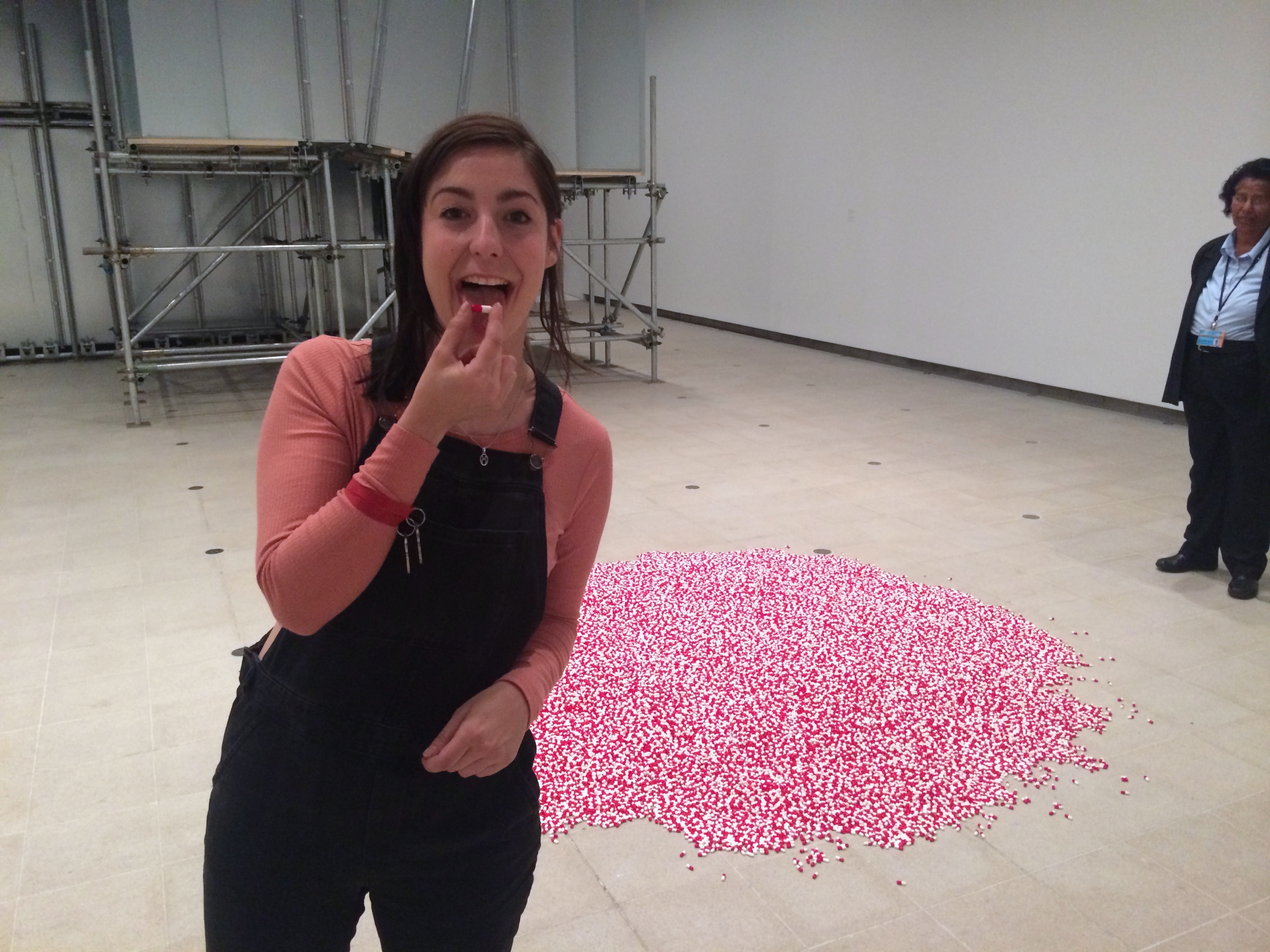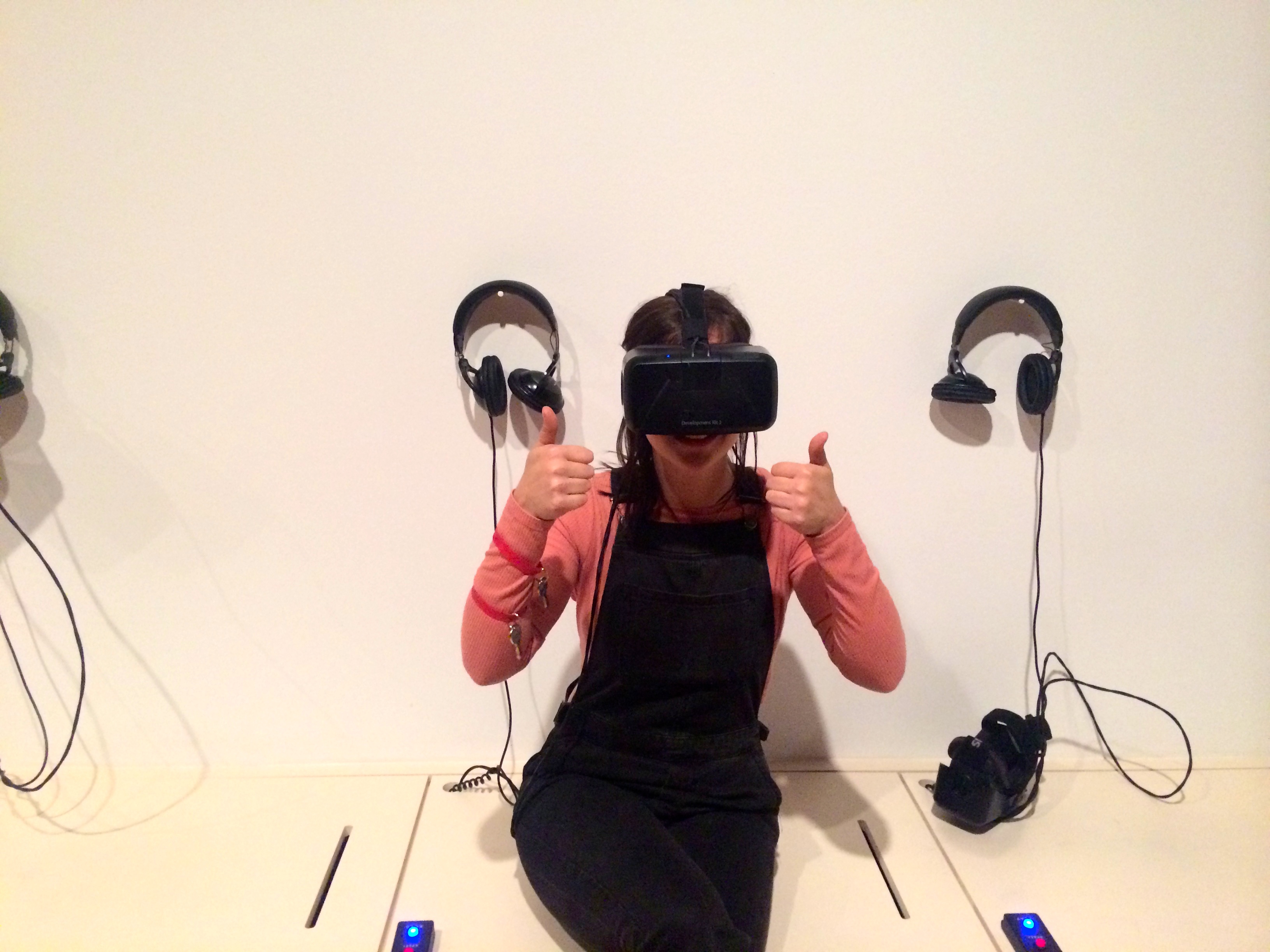This spring’s Frieze New York demonstrated a real enthusiasm for interactive art, with highlights such as the solo presentation of Martha Araújo which consisted of a large Velcro ramp against which visitors in special suits were encouraged to throw themselves, or elsewhere, Aki Sasamoto’s maze-style personality test which offered several choices (coffee or tea?) and then suggested a personality type based on your answers. (Mine was, awkwardly, ‘Into Big’. I’ve got a badge to prove it.)
Decision, then, seems to have come at a great time. It’s Carsten Höller’s largest survey show in the UK to date and is described by the Hayward as ‘confronting visitors with a series of choices, featuring mirrors, disconcerting doubles and mysterious objects which together create an impression of a world where nothing is quite as it seems’.
Inside the exhibition there’s a dark, maze-like tunnel (‘Decision Corridors’), a ‘Pill Clock’ which drops a red and white capsule from the ceiling every three seconds, ‘Two Flying Machines’ where visitors are suspended from what looks like a paraglide attached to a metal arm, a virtual reality headset, goggles that make you see upside down, and beds that ramble around like robots (‘Two Roaming Beds’).
I visited with the resolve to interact with everything there, looking for an answer to the question: what does it feel like to take part in an exhibition like Decision?
The works that take up the most time, and are the most ‘interactive’, are the flying machines. I found them really enjoyable, but not because the taking part was particularly rip-roaring fun. Rather, a small comment in the guide to the exhibition revealed that Höller expected—and, I like to think, hoped—that people would feel awkward and embarrassed whist having a go on them, hung as they were like a ‘sack of potatoes’. It’s the kind of occasion where you hope everyone waiting below will huddle together and make enthusiastic comments about the contraption; eagerly awaiting their turns in a gaggle of communal spirit. Obviously, this wasn’t the case: people stood quietly and pretended not to overhear the conversations of those queuing next to them. The visitors on the flying machine, except for one elderly couple who looked like they were out on a date and having a tremendous time, didn’t really seem to be enjoying themselves (perhaps because it went so slowly and the harness pulled your bum skywards in a way you knew made you look sad and silly to anyone looking on).
Decision, at its core, tests visitors’ sensitivity to social norms—how self-conscious are you? How easily are you able to adjust to the new rules of the gallery space? For us, the answer was pretty quickly: from the moment we entered the dark tunnel at the beginning of the exhibition (which really was pitch black) we were making squealing sounds of excitement and seeing if we could jog through without sustaining an injury. This excitement was mostly about the possibility that the whole institution might have thrown caution to the wind when it came to standard health & safety concerns, and that we were going to be able to do whatever we wanted and have a fantastic, unsupervised time (I was even wearing dungarees for maximum play capability). Immediately upon exiting the tunnel, however, it was made clear this wasn’t the case. We were told variously by staff not to walk so fast with the ‘Flying Mushrooms’, not to eat more than one capsule (and move on quickly) from ‘Pill Clock’, to certainly NOT get in the roaming beds, or later on, in the dice, and not to touch the upside-down goggles until we were done with the demonstration.
I get it—an institution like the Hayward can’t allow people to just do whatever they like in a space that is characterized by order and control, because things will get broken and visitors hurt, etc, and as such it’s not the staff’s fault that they have to reprimand people to keep that sense of order. More to the point, though, I have a suspicion that the exhibition isn’t even about bouncing around merrily as if in an adult playground. It’s an exploration into how people feel able to interact with things that are completely out of context in that space—and about how this conforms with or transgresses the way they are told to do so.
The slide-as-exit was the best bit, if I’m honest. A moment of total, whizzing freedom! And then—‘Please go and collect your bags.’
Decision runs until 6 September at Hayward Gallery










